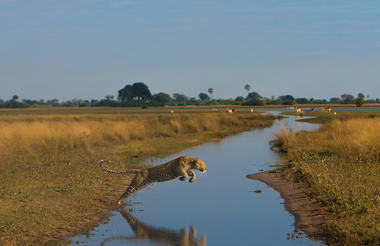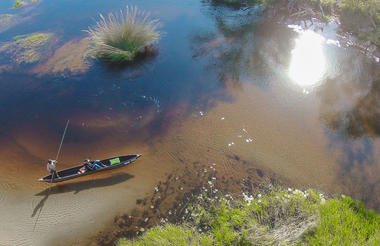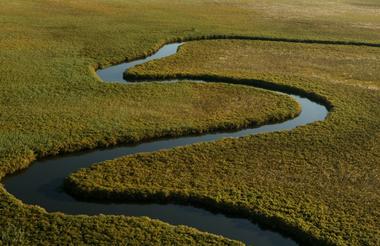When it comes to Botswana, Savute breaks all the rules: both for animal behaviour and for habitats. Here, lions hunt elephants, leopards take to fishing, the grasslands are vast and open and rocky hills punctuate the flat terrain.
Savute has proved itself somewhat of an enigma over the decades. During years of abundance its marsh fills with water, fed by the Savute Channel. The water weaves its way here from Angola via a chain of rivers and lagoons, spilling out into the marsh and drawing huge herds of elephants, wildebeest, zebras and buffalos.
In drier years, the channel shrinks into small pools and can evaporate completely, leaving the marsh dry and sending wildlife to the waterholes for water, where the tension between plains game and predators heats up over a parched and dusty landscape.
Wherever the plains game goes in Savute, the predators follow close-by, learning tricks of survival to adapt to the marsh’s ever changing nature. Whether the water flows here or not is anyone’s guess. The channel and marsh have a life of their own, independent both of the seasons and the annual rainfall.
Savute doesn’t just offer a safari; it’s also a feast for the eyes. Whitewashed skeletal trees set against green grass and huge blue skies, blinding red sunsets that spill purple and orange across the bush, and endless horizons that fade into a hazy mirage with the heat.
As Savute is part of Chobe National Park, a safari here is limited to game drives only. With the diversity of habitats, wildlife and landscapes that the marsh has to offer however, you’ll still find yourself wishing you had more time to see it all.

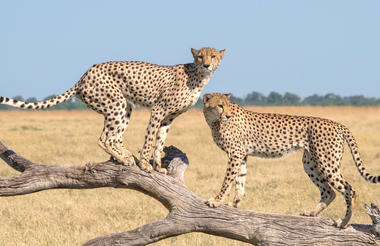
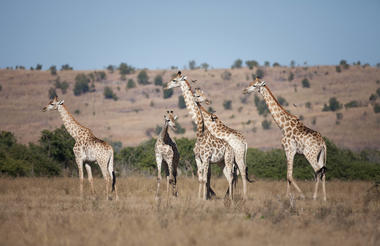
The Okavango Delta is where the wild things are: an immense, waterlogged oasis alive with elephants and birdlife, adrift in the middle of Kalahari sands. The real magic of the Delta lies in its water, trickling through from far away highlands, and spreading across the channels and floodplains.
During winter in the Kalahari, when the sun has baked the earth bare and turned the desert its driest, water fills the Okavango; transforming the floodplains into a Noah’s Ark of African wildlife.
As the water brings life to the delta, its local residents shape and recreate it. Termites slowly build mounds into islands, germinated with palm trees by passing elephants. Waterways open and close on the whim of wide-bottomed hippos, carving out channels where they crash through reeds, and leaving room behind them for exploration by mokoro.
The Okavango has many faces, which change throughout the year, prompted by that most unpredictable diva of all: the weather. Water levels rise and drop, expanding and shrinking islands, while animals move where the life is easiest and the grass greenest. In a few days, a sandy road driven by vehicle can become a waterway of unknowable depth, prompting a safari by boat instead.
Where and when you stay in the Okavango Delta will hugely influence what you do in the bush each day, the animals you’re most likely to see and finally, the safari experience you’ll have.
The delta’s watery heart is best discovered by mokoro through shallow channels and floodplains, as well as crossing the islands on foot. For less water and more of the big game, visit a camp on its drier edges (including Moremi Game Reserve and the Khwai Community Area), jump on a vehicle and seek out the animals hiding in the woodlands.
